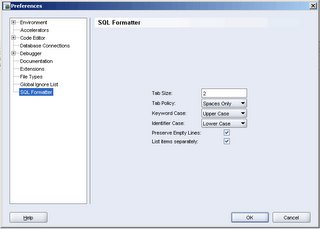Reading a post by Doug Burns that referred to multiple comments about fragmentation of the Oracle community made me think about my own motives for publishing material.
My site (oracle-base.com) started many years ago as a means of collating information for me to use. As a freelance DBA/Developer, it was easier to keep information on a website than carry it from company to company on floppies or CDs. How-To articles allowed me to quickly remember how features worked if I hadn’t used them for a while. In addition, these articles allowed me to answer common questions with one URL, rather than repeating the same conversation or email. It all started as a means of making my life easier.
The site started to get a bit more popular when I wrote some Oracle 9i OCP DBA upgrade notes and put them on the site. I did the beta exam so there were no upgrade exam guides available. Since I had to write my own notes anyway, putting them on the site was no effort. The process for the 10g OCP upgrade was similar.
On occasion I write specific articles to answer questions, but for the most part I write about whatever I’m currently doing. So it’s still very much a site for me. The fact that others find the site useful is nice for my ego, but not essential for its existence.
Regarding the community fragmentation issue, I don’t see this as a problem. I agree with Eddie Awad’s view in Dougs comments:
I believe that the Internet is not a Pizza pie, it is an open and vast medium, only the useful and the reliable will surface in this medium, the rest will sink into the black whole of the web.
Q: So why do I publish on the web?
A: I do it for me. If others like it that’s fine. If the don’t they should go elsewhere.
Q: Should other people of varying abilities publish on the net?
A: Too right they should! If I think it’s rubbish I won’t read it. If it’s good I will.
Q: Does it matter if they make their mistakes in public?
A: If they can live with it I can 🙂
Q: Is this bad for the community?
A: I’m sure there will be occasional bum-steers, but for the most part it won’t matter too much. We’ve all given bad advice on more than one occasion, and we all will again. Does this mean we should stop? I don’t think so.
Q: Is there anymore to say on this matter?
A: I’m sure there is, but I’m a little bored now 🙂
Cheers
Tim…
